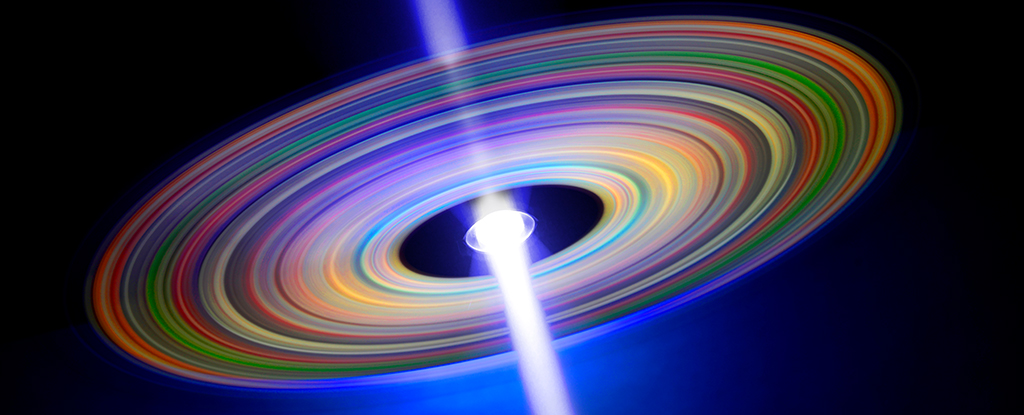Squeeze enough stuff into one spot, space-time itself will pucker up in a sweet cosmic kiss known as a black hole.
As far as Einstein’s sums are concerned, that ‘stuff’ includes the massless glow of electromagnetic radiation. Given E = mc2, which describes the equivalence between mass and energy, the energy of light itself should – in theory – be capable of creating a black hole if enough of it is concentrated in one spot.
Before you crack out the big-gun lasers and punch some holes into the Universe’s floorboards, there’s one thing researchers from the Complutense University of Madrid in Spain and the University of Waterloo in Canada want you to know.
Something called the Schwinger effect could make the whole thing impossible before you even get started.
Einstein’s general theory of relativity is a description of space and time distorting in relation to the presence of energy, such as that contained by a mass. Put enough mass in one spot and the distortion will become so extreme, nothing – not even light – will escape.
Back in the mid-1950s, American theoretical physicist John Wheeler discovered there was nothing in Einstein’s theory to rule out the possibility that the energy within a sufficient concentration of gravitational or electromagnetic waves could warp space-time enough to keep those same waves trapped in place.
He called this exotic object a geon, and considered it a kind of hypothetical, highly unstable particle.
Today, geons are a relic of an age of scientific musings that also gave us wormholes and white holes; theoretical toys that tell us more about the limits of mathematical models than they do about physical reality.
Yet a form of geon that Wheeler referred to as a “kugelblitz” pops up every now and then in science fiction as a fantastic power source. German for ‘ball lightning‘, these itty-bitty proton-sized black holes were proposed to form in the intense focus of incredibly energetic beams of light, such as a futuristic high-powered laser.
While general relativity gives the green light to kugelblitze, quantum physics has its doubts. So theoretical physicist Álvaro Álvarez-Domínguez from the Complutense University of Madrid and his team ran the numbers on the behavior of electromagnetic fields as their energy rises to extreme levels.
The quantum landscape is like a casino where waves of possibility ripple constantly like non-stop roulette wheels. Small bets rarely pay, but pile enough cash on any one table, you’re almost guaranteed a win.
Similarly, a strong electromagnetic field in an otherwise empty space almost guarantees pairs of electrons and positrons will emerge from the quantum flurry of endless possibilities.
In a paper that is yet to be peer-reviewed, Álvarez-Domínguez and his team showed this phenomenon known as the Schwinger effect would prevent the formation of kugelblitze ranging in size from nearly twice the size of Jupiter down to a fraction of the size of a proton.
In effect, piling all of that light in one spot would provide the necessary energy for pairs of charged particles to pop into existence and fly off close to the speed of light, preventing the growing dimple in space-time from ever developing a black hole-defining event horizon.
“Our analysis strongly suggests that the formation of black holes solely from electromagnetic radiation is impossible, either by concentrating light in a hypothetical laboratory setting or in naturally occurring astrophysical phenomena,” the team writes in their analysis.
That’s not to rule out the possibility completely. The researchers admit things might have been different in the “exceptionally extreme conditions” of the early Universe.
Other forms of geon, such as those based on gravitational waves, remain a curiosity that could have also existed in the nascent cosmos billions of years in the past.
Those who are banking on a kugelblitz-powered spacecraft to jet them to the stars now might have to go back to the drawing board, however.
This paper is available on the preprint server arXiv.





